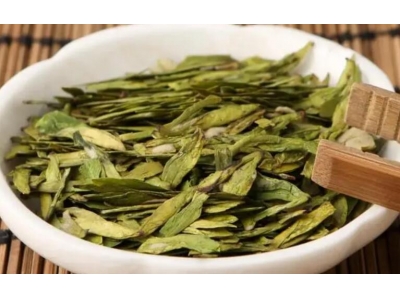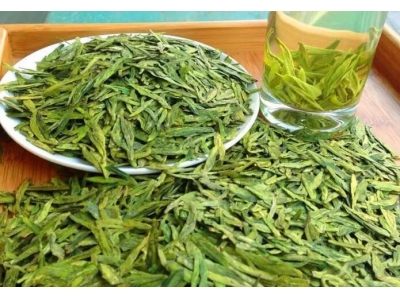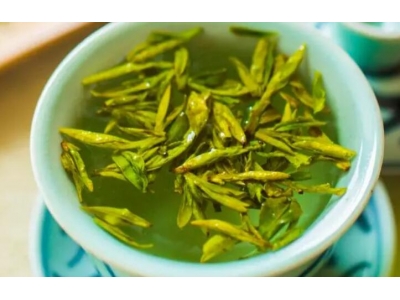英文介绍中国茶文化
一、英文介绍中国茶文化
英文介绍中国茶文化
中国茶文化源远流长,拥有悠久的历史和丰富的内涵。茶叶作为中国传统文化的象征之一, 在世界范围内享有盛誉。无论是中国人还是外国人,都对中国的茶文化产生了浓厚的兴趣。下面,让我们一起来探索并介绍中国茶文化。
茶的起源
据史书记载,中国的茶起源可以追溯到公元前2700多年前。茶树最早生长在中国的云南、四川和贵州等地区。在中国的唐朝时期(公元618年-907年),茶叶开始被广泛种植和使用。茶叶不仅成为中国皇室的珍贵饮品,也被普通人广泛消费。
中国不仅是茶的发源地,而且也在茶叶的加工和烹饪方面做出了重大贡献。中国人熟练地掌握了各种茶叶的制作方法,如绿茶、红茶、白茶、乌龙茶和普洱茶。每种茶叶都有独特的风味和特点,反映了中国丰富的自然环境和文化传统。
中国茶文化的重要组成部分
中国茶文化包含着许多重要的组成部分,如茶乡、茶具和茶艺。这些元素相互交融,共同构成了中国茶文化的独特魅力。
1. 茶乡
中国茶乡是茶叶种植和生产的核心地区。中国有许多著名的茶乡,如云南的普洱、浙江的龙井、福建的武夷山等。茶乡不仅提供了优质的茶叶原料,而且也成为了旅游景点,吸引着来自世界各地的游客。
2. 茶具
茶具在中国茶文化中扮演着重要的角色。茶具不仅是沏茶的工具,更是一种传统工艺品。中国的茶具种类繁多,如茶壶、茶杯、茶盘、茶盒等。每一种茶具都有其独特的设计和制作工艺,体现了中国人对茶文化的热爱和追求。
3. 茶艺
茶艺是中国茶文化中的精髓所在。沏茶不仅是一种行为,更是一种艺术。中国茶艺注重于茶的品质、色泽、香气和口感等方面。通过精心烹饪和倒茶的方式,中国茶艺师能够展示出茶叶的最佳状态,并创造出一种独特的茶文化氛围。
中国茶文化的影响
中国茶文化不仅在中国国内产生了深远的影响,也对世界茶文化发展起到了重要的推动作用。
首先,中国的茶文化成为了中国人民日常生活的一部分。在中国,社交、聚会、对待客人等场合都少不了茶的身影。而且,在中国的传统节日和庆典活动中,沏茶和品茶也被视为重要的传统仪式。
其次,中国的茶文化传播到了世界各地。如今,越来越多的人认识并喜欢上了中国的茶叶。中国的茶文化也成为了国际交流和文化交流的重要媒介。
结语
中国茶文化作为独特而丰富的文化遗产,不仅展现了中国人民对茶的热爱和追求,也成为了推动中外文化交流的桥梁。通过了解中国茶文化,我们能够更好地理解中国人民的生活方式和价值观念。
希望本文内容能够为您提供有关中国茶文化的初步了解,并能进一步激发对中国传统文化的兴趣。
二、邢台文化英文介绍?
What’s more, Xingtai, an ancient city ,has a history of more than 3500 years.there are many famourspeople. such as
It is the hometoen of weizheng who was a famous a blunt and loyal minister in tanDynasty,Andit is also the hometown of Guoshoujing, who was a famous scientist of the Yuan Dynasty.
There is a story in history about Zhang Guolao, one of the eight deities in the Tao school. He thought that going forward was moving backward, so he rode a donkey backward
三、英文介绍丹麦的文化文化?
The Danish capital, Copenhagen。Copenhagen is the capital of Denmark, the Nordic is one of the most famous ancient city. Rosenborg Palace is one of Denmark's most famous castle, located in the northern part of the Copenhagen City Kings Park。
There are special holiday Shrovetide, Easter, a series of religious holidays, Constitution Day。
四、中国灯烛文化英文?
1 中国灯烛文化的英文是 "Chinese Candle Culture".2 灯烛在中国文化中有着深远的历史和意义,它代表着光明、希望和祝福。灯烛在传统节日如春节、元宵节和中秋节等中扮演着重要的角色,人们会点亮灯烛来庆祝和祈福。此外,灯烛也常用于纪念和悼念活动。3 中国灯烛文化的英文翻译 "Chinese Candle Culture" 可以帮助外国人更好地了解和欣赏中国的传统文化。灯烛作为一种文化符号,不仅代表着中国人的情感和价值观,也展示了中国人对美好生活的追求。通过学习中国灯烛文化,人们可以更加深入地了解中国的传统习俗和价值观念。
五、英文介绍中国传统文化
英文介绍中国传统文化
In recent years, there has been a growing interest in Chinese traditional culture around the world. From the intricate art of calligraphy to the graceful movements of martial arts, Chinese traditions have captivated people from different corners of the globe. This blog post aims to provide a comprehensive introduction to Chinese traditional culture in English, shedding light on its rich history, customs, and values.
1. History
Chinese traditional culture has a history that spans thousands of years. It is deeply rooted in the teachings of ancient philosophers and emperors who shaped Chinese civilization. The influence of Confucianism, Taoism, and Buddhism has played a significant role in shaping the values and beliefs of the Chinese people.
One of the most iconic aspects of Chinese traditional culture is the Great Wall of China. Built over centuries, this majestic structure represents the perseverance and determination of the Chinese people. It stands as a testament to the rich history and architectural prowess of ancient China.
2. Customs and Traditions
Chinese traditional culture is vibrant and diverse, with a plethora of customs and traditions that are still observed today. One such tradition is the celebration of Chinese New Year, also known as Spring Festival. This is the most significant holiday in China, where families gather, exchange gifts, and enjoy festive meals.
The Dragon Boat Festival is another prominent event in Chinese culture. It celebrates the legendary poet Qu Yuan and involves thrilling boat races and the consumption of sticky rice dumplings known as zongzi.
Chinese traditional culture also places great emphasis on respect for the elderly and filial piety. This is evident in the way children are expected to care for their parents and grandparents, honoring their wisdom and contributions to the family.
3. Arts and Literature
Chinese traditional culture is renowned for its rich artistic heritage. From the delicate beauty of Chinese painting to the melodic sounds of traditional music, the arts play a vital role in Chinese culture.
Calligraphy, in particular, holds a special place in Chinese traditional culture. It is considered a visual art form that embodies elegance and self-expression. With its intricate strokes and graceful movements, calligraphy has been used for centuries to convey emotions and capture the essence of Chinese philosophy.
Chinese literature has also played a significant role in preserving and transmitting Chinese traditional culture. Ancient classics such as "The Art of War" by Sun Tzu and "Journey to the West" by Wu Cheng'en are celebrated works that continue to inspire readers around the world.
4. Philosophy and Spirituality
Chinese traditional culture is deeply intertwined with philosophy and spirituality. The teachings of Confucius, Laozi, and Buddha have shaped the moral, ethical, and spiritual values of the Chinese people.
Confucianism emphasizes the importance of harmonious relationships, respect for authority, and the cultivation of personal virtues. Taoism, on the other hand, encourages individuals to live in harmony with nature and seek the path of balance and tranquility.
Buddhism, introduced to China from India, teaches the principles of compassion, mindfulness, and the pursuit of enlightenment. It has greatly influenced Chinese traditional culture, especially in the realms of art, architecture, and meditation practices.
5. Festivals and Celebrations
Chinese traditional culture is characterized by a myriad of colorful festivals and celebrations throughout the year. These events provide an opportunity for people to come together, express their gratitude, and celebrate their cultural heritage.
The Lantern Festival, which marks the end of the Chinese New Year celebrations, is a magical event filled with lantern displays, performances, and the solving of riddles written on lanterns. It is a time of joy and wishes for a prosperous year ahead.
The Mid-Autumn Festival, also known as the Moon Festival, is a time for families to gather, admire the full moon, and enjoy mooncakes. This festival symbolizes unity and reunion, with the moon serving as a metaphor for family togetherness.
Conclusion
Chinese traditional culture is a treasure trove of wisdom, artistry, and spirituality. Its profound impact can be felt in various aspects of Chinese society, from the reverence for ancestors to the exquisite craftsmanship of traditional arts. By understanding and appreciating Chinese traditional culture, we gain insights into the values and traditions that have shaped this ancient civilization.
As interest in Chinese traditional culture continues to grow, it is crucial to foster cross-cultural understanding and appreciation. Through education, cultural exchange programs, and support for artistic endeavors, we can bridge the gap between different cultures and promote a more inclusive world.
六、中国饮食文化英文介绍
中国饮食文化英文介绍
中国是一个拥有悠久历史和丰富文化的国家,其饮食文化自古以来便以其独特性和热情而闻名于世。中国的饮食文化不仅仅是关于食物的吃与否,更是一种精神的体现和社交的方式。无论是传统的家庭聚餐还是正式的宴会,中国人总是把饮食当作一种仪式和交流的途径。
中国的饮食文化与其悠久的历史和地理环境密不可分。中国地域广阔,不同的地区拥有独特的土壤和气候条件,这导致了不同地方的饮食文化的差异。北方人以面食为主,如饺子、面条等,而南方人则以米饭为主,如粤菜、闽菜等。不同地区的饮食文化为中国的饮食提供了丰富多样的选择。
中国人对食物的重视可以追溯到几千年前。自古以来,中国人就视食物为天的恩赐,尊重和感恩自然的赐予。这种崇敬和敬畏的态度在中国饮食文化中得到了体现。中国人相信食物与健康息息相关,讲究荤素搭配,尽量保持饮食的平衡和营养的多样性。
中国饮食文化也注重食物的色、香、味、形。中国人注重视觉的享受,食物的色彩应该丰富多样,并且与盘子的颜色搭配得宜。食物的香气也十分重要,中国烹饪追求的是原汁原味,尽量保留食物本身的香味。而在口感方面,中国人喜欢食物的多样性,咸甜酸辣的味道交织在一起,给人们带来饱满的口感享受。
中国的饮食文化还有许多令人着迷的传统习俗。例如,在中国的一些传统节日中,人们会品尝特定的食物以示祝福和纪念。例如,过年时吃年糕和饺子,象征着团圆和吉祥。还有端午节时吃粽子,中秋节时赏月吃月饼等等。这些传统习俗不仅丰富了中国饮食文化,更为人们的生活带来了乐趣和温暖。
中国的饮食文化也深受中医理论的影响。根据中医的理论,不同的食物具有不同的性味和功效,可以调理身体的阴阳平衡和五脏六腑的功能。中国人注重食物与健康的关系,追求饮食的平衡和营养的多样性,使得中国的饮食文化成为了一种兼具美味和健康的饮食方式。
总而言之,中国的饮食文化凝聚了中国人民丰富的智慧和深厚的情感。从食材的选择到烹饪的方法,从餐桌上的礼仪到节日的习俗,中国饮食文化贯穿了中国人民的生活始终。它不仅仅是满足人们的生理需求,更是一种精神的享受和文化的传承。
七、日本绿茶文化和中国绿茶有什么区别?
日本绿茶文化和中国绿茶在历史、种植、制作和饮用方式等方面都有所不同。
- 历史不同:日本绿茶文化的历史可以追溯到平安时代(794-1192 年),当时日本从中国引进了绿茶种植技术。而中国绿茶的历史则可以追溯到公元前 2730 年左右的神农时代。
- 种植不同:日本绿茶的种植主要集中在日本的静冈县、京都府和奈良县等地,而中国绿茶的种植则分布在中国的各个地区,如浙江、安徽、福建、江西、河南等地。
- 制作不同:日本绿茶的制作工艺主要包括采摘、杀青、揉捻、干燥等步骤,而中国绿茶的制作工艺则更加复杂,包括采摘、杀青、揉捻、干燥、筛分、包装等步骤。
- 饮用方式不同:日本绿茶通常以冲泡的方式饮用,而中国绿茶则可以以冲泡、煮茶、泡茶等方式饮用。
总的来说,日本绿茶文化和中国绿茶在历史、种植、制作和饮用方式等方面都有所不同,但它们都是世界茶文化的重要组成部分。
八、重庆红岩文化英文介绍?
Zhazi Cave is located at the foot of Gele mountain in Ciqikou and Wulingguan, suburban area of Chongqing. Zhazi Cave used to been a coalmine founded in 1920 by a businessman named Chen Erchang. Since 1938, it became a clandestine prison for Kuomintang to lock up and persecute revolutionaries.
During the war, lots of heroic, solemn and stirring stories happened in the prison. Those stories were really very touching that they encouraged the patriotic sentiment among the Chinese. In 1943 Kuomintang founded an intelligence agency: Sino-American Co-operation office.
Then the Bai Gongguan, another clandestine prison, became the office building of Sino-American Co-operation office. Revolutionaries were transferred from Bai Gongguan to Zhazi Cave prison. Among those revolutionaries are the likes of the Chinese famous hero Jiang Zujun, who was honored as Jiangjie. She was also sentenced to imprisonment in the Zhazi Cave.
九、英国酒文化英文介绍?
英国酒文化历史英文介绍:“History of British wine culture”
十、埃及文化英文介绍?
Egyptian culture is one of the oldest and most vibrant cultures in the world, spanning thousands of years of history. The culture is deeply rooted in ancient traditions, with a unique blend of influences from various civilizations and eras.
Hieroglyphics, a form of writing, were the cornerstone of Egyptian culture, serving as a means of communication, record keeping, and artistic expression. The ancient Egyptians are also renowned for their monumental architecture, such as the pyramids, temples, and obelisks, which showcase their advanced engineering skills.
Religion played a significant role in Egyptian culture. Their polytheistic belief system was centered around a pantheon of gods and goddesses, each with distinct attributes and powers. They also believed in an afterlife, and the process of mummification was a vital part of their funerary rituals.
The Egyptians had a sophisticated system of administration, governed by pharaohs who served as both political and religious leaders. They were also skilled in the arts, producing exquisite works of art such as sculptures, paintings, and jewelry.
Egyptian culture has left an indelible mark on the world, influencing various aspects of society, from language and architecture to philosophy and religion. Even today, the fascination with Egyptian culture remains strong, with many people drawn to its rich history, mythology, and traditions.
In summary, Egyptian culture is a complex tapestry of ancient traditions, religious beliefs, architectural wonders, and artistic expressions that continue to captivate people worldwide.






